Goland Wing Model
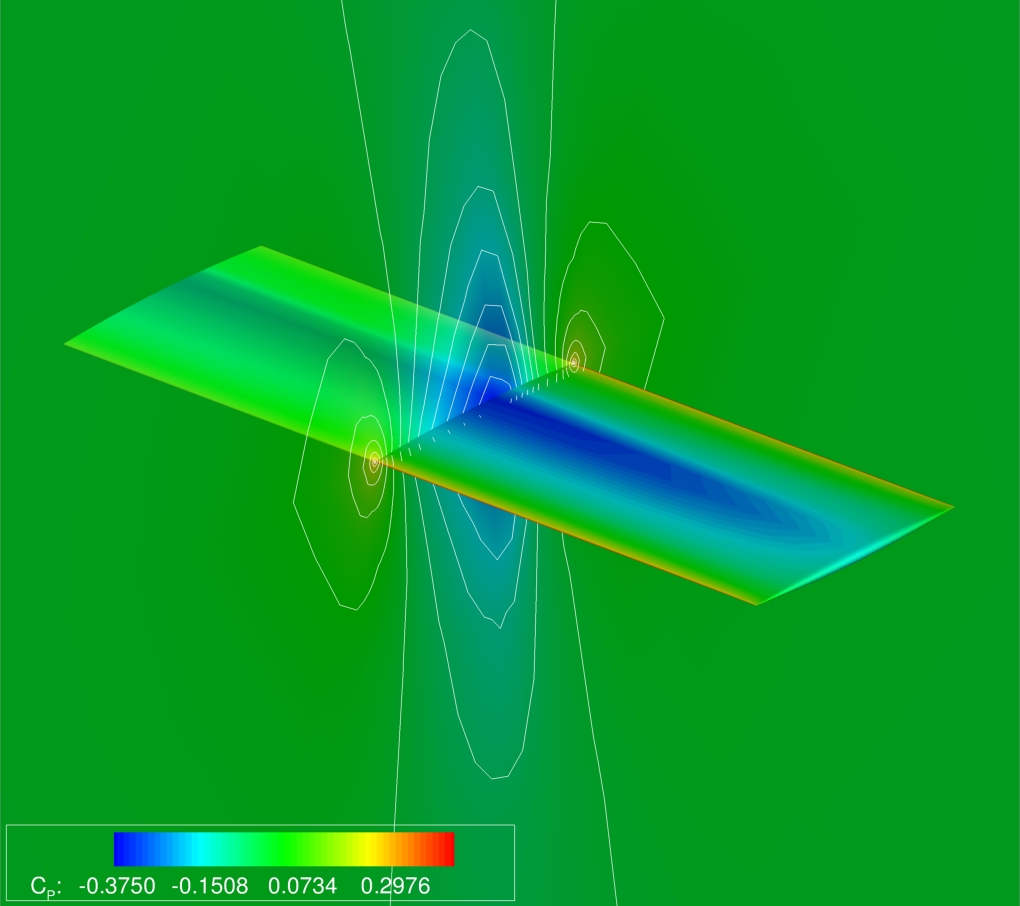 |
| Goland Wing - Inviscid Flowfield at M0.90 |
The Goland wing model used in this work is based on the described model in Beran et al(2004). The model represents a cantilevered wing with a 20ft span and 6ft chord. The aerofoil consists of a 4% thick parabolic arc. Two configurations are available, with or without a tip store. The store has a width of 1ft and a length of 10ft.
The wing structure is modeled by a finite element model of the wing box. The finite element model is built up from shear panels, modeling the spars and ribs, and membrane elements, modeling the wing skins. The spar and rib caps are modeled by rod elements and posts connect the wing skins at every spar/rib intersection. The material properties of every element consist of a Young's modulus of 1.4976x109 slugs/ft2, a shear modulus of
5.616x108 slugs/ft2, and a structural density of 0.0001 slugs/ft3.
The result of the model is a very flexible wing that can exhibit several different aeroelastic behaviors. The clean case model has been shown to flutter at relative low velocities, Beran et al(2004), Woodgate and Badcock(2007). The wing with store has also been shown to develop an LCO in the transonic regime, Beran et al(2004).
CFD Resources
MSC.Nastran Resources
Solver Input Files
MSC.Nastran & CFD Results
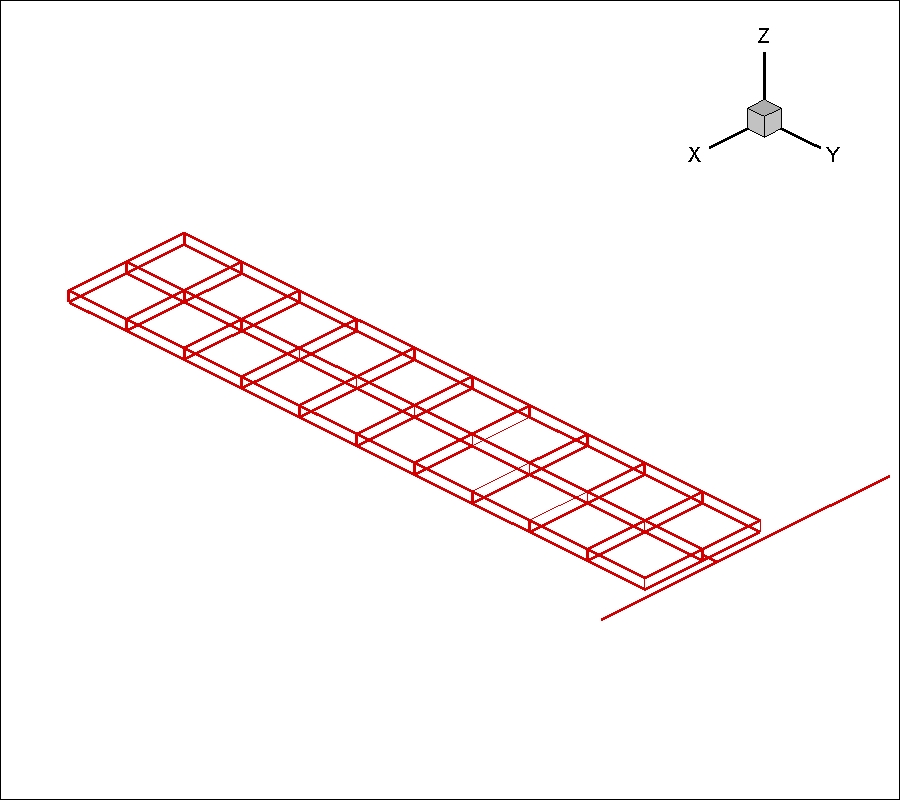 |
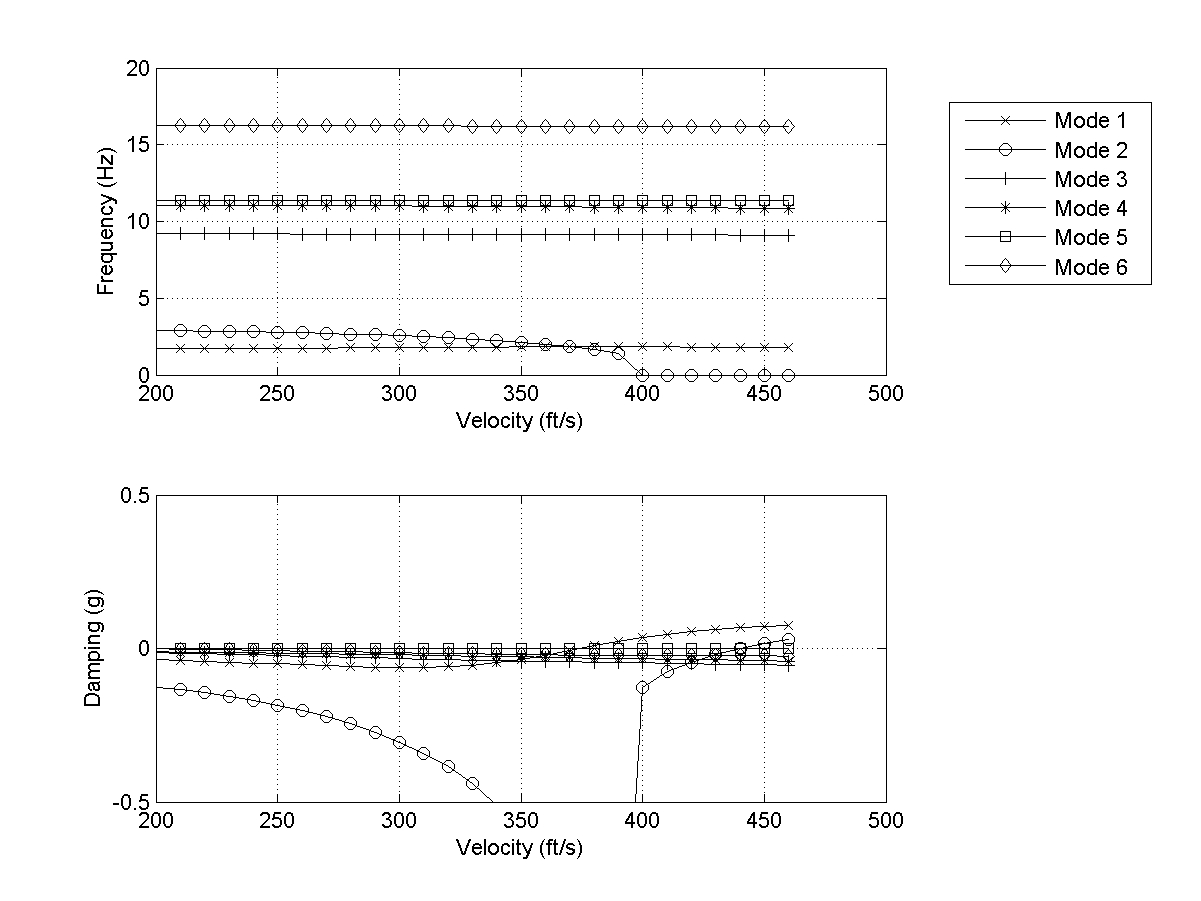 |
| FE Model |
Frequency/Damping Plot |
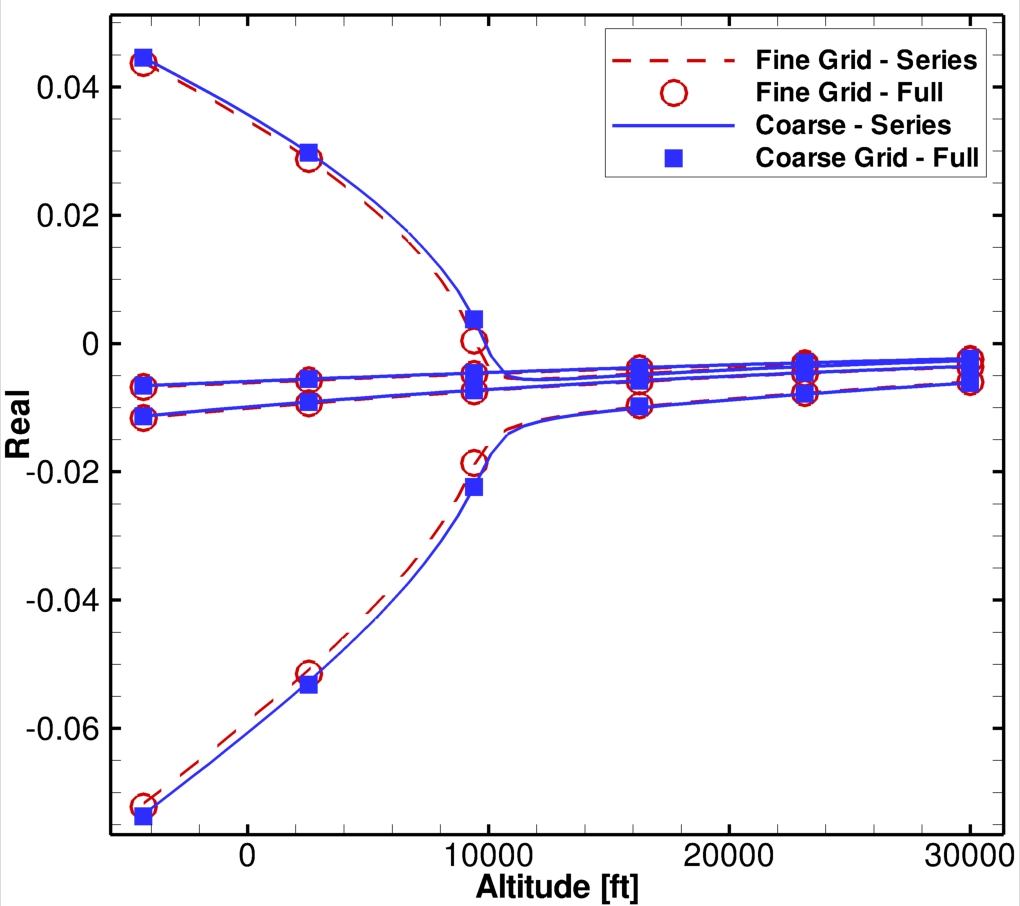 |
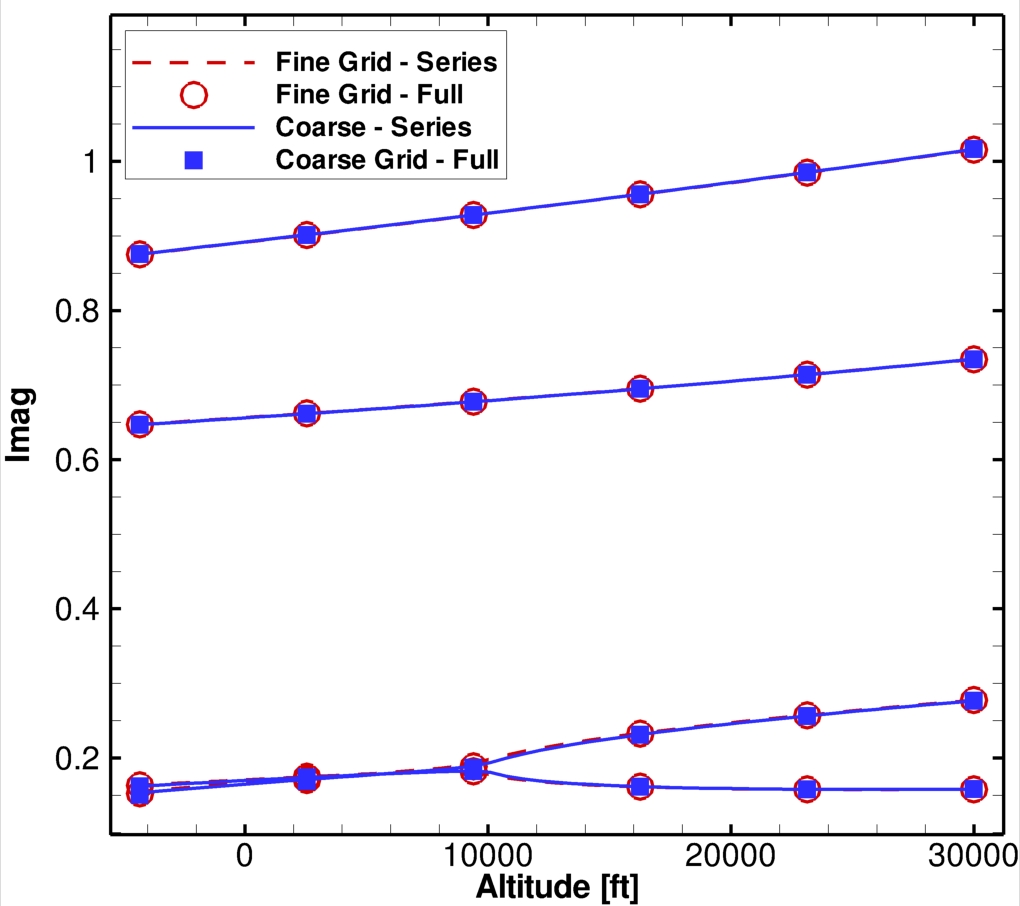 |
| CFD Based Damping Plot - M0.50 |
CFD Based Frequency Plot - M0.50 |
Tecplot CFD Files
Variability Study
The influence of structural variability on the aerelastic behaviour of aircraft has been receiving increased attention from the community. In the Goland wing case this can play a decisive factor with respect to flutter. In the following example, seven parameters were allowed to vary within +/- 5% of their nominal values to perform Monte-Carlo analysis of the aeroelastic stability. The CFD based eigenvalue analysis requires the normal mode shapes and natural frequencies as inputs. By varying the structural parameters, 1000 samples of different mode shapes and natural frequencies were generated. This was implemented in MatLab using MSC. Nastran with the models provided above.
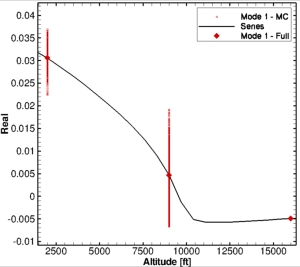 |
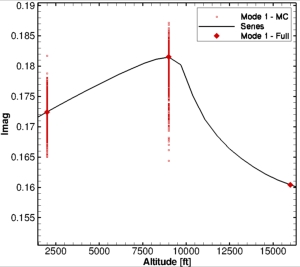 |
| CFD Based Damping MC Plot |
CFD Based Frequency MC Plot |
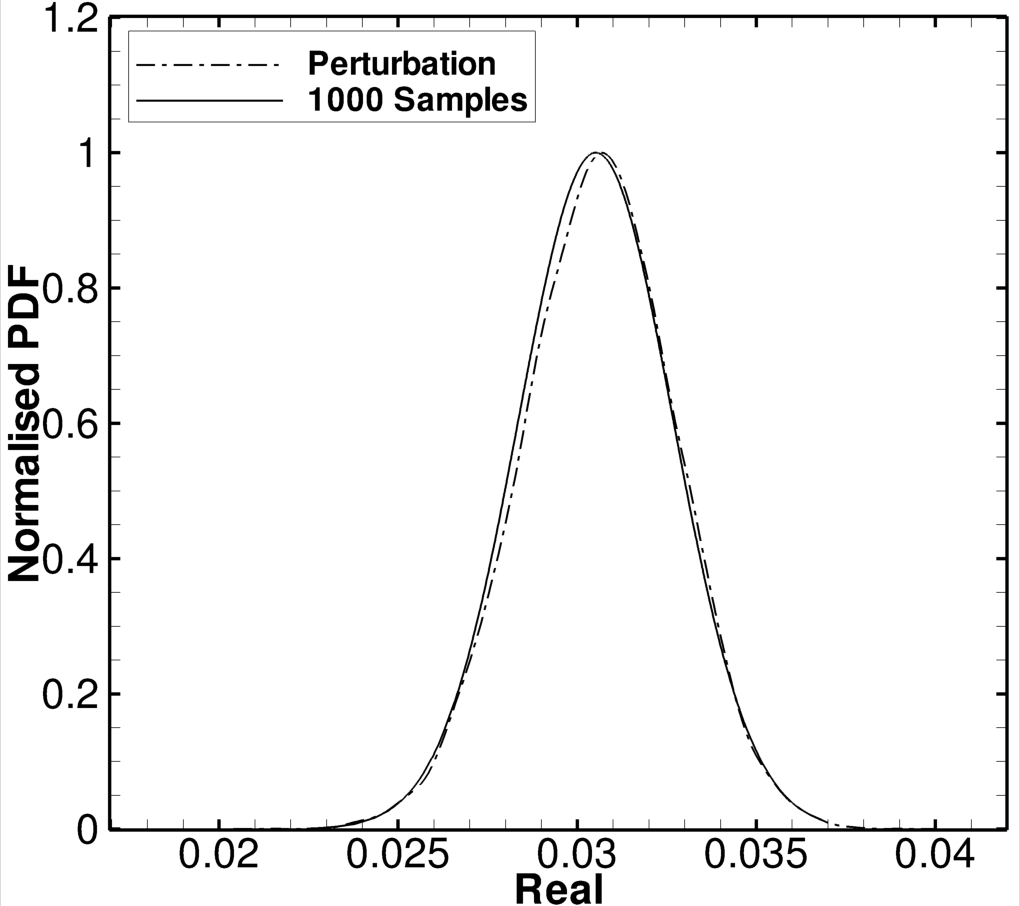 |
| CFD Based PDF for Real Eigenvalue |
Variability Resources
References
- M. Goland, The flutter of a uniform cantilever wing, Journal of Applied Mechanics, 12(4), A-197 - A-208, 1945.
- M.J. Patil, D.H. Hodges and C.E.S Cesnik, Nonlinear aeroleastic analysis of complete aircraft in subsonic flow, Journal of Aircraft, 37(5),753-760,2000.
- P.S. Beran, N.S. Khot, F.E. Eastep, R.D. Snyder, J.V. Zweber, L.J. Huttsell and J.N. Scott, The dependence of store-induced limit-cycle oscillation predictions on modelling fidelity, in RTO Applied Vehicle Technology Panel Symposium, Paris, France, Paper No. 44, 2002.
- P.S. Beran, N.S. Khot, F.E. Eastep, T.W. Strganac and J.V. Zweber, Effects of viscosity on store-induced limit-cycle oscillation, in ITEA Aircraft-Stores Compatibility Symposium, Destin, Florida, 2003.
- N. Khot, P. Beran, J. Zweber and F. Eastep, Influence of tip store mass location on wing limit cycle oscillation, in Proceedings of the 2003 AIAA Dynamics Specialist Conference, AIAA Paper 2003-1731.
- P.S. Beran, T.W. Strganac, K. Kim nad C. Nichkawde Studies of Store-Induced Limit-Cycle Oscillations Using a Model with Full System Nonlinearities, Nonlinear Dynamics, 37(4),323-339,2004
- P.S. Beran, N.S. Khot, F.E. Eastep, R.D. Snyder and J.V. Zweber, Numerical analysis of store-induced limit-cycle oscillation, Journal of Aircraft, 41(6),1315-1326,2004.
- G.A. Vio, G. Dimitriadis, J.E. Cooper, K.J. Badcock, M. Woodgate and A. Rampurawala, Aeroelastic system identification using transonic CFD data for a 3D wing, IX International Conference on Recend Advances in Structural Dynamics, 17-19 July 2005, Southampton, UK.
- G.A. Vio, G. Dimitriadis, J.E. Cooper, K.J. Badcock, M. Woodgate and A. Rampurawala, Aeroelastic system identification using transonic CFD data for a wing/store configuration, Aerospace Science and Technology, 11(2-3):145-154,2007.
- G. Dimitriadis, G.A. Vio, J.E. Cooper, K.J. Badcock, Flight-Regime Dependent Reduced Order Models of CFD/FE aeroelastic systems in transonic flow, 48th AIAA Structures, Structural Dynamics and Materials Conference, 23-26 April 2007, Waikiki, Hawaii.
- G.A. Vio, G. Dimitriadis, J.E. Cooper and K.J. Badcock, Linear and Non-Linear Transonic Flow Behaviour of the Goland+ wing, International Forum of Aeroelasticity and Structural Dynamics, 18-20 June 2007, Stockholm, Sweden.
- M.A. Woodgate and K.J. Badcock, Fast prediction of transonic aeroelastic stability and limit cycles, AIAA Journal, 45(6), 1370-1381, 2007.
- M. A. Woodgate, Fast prediction of transonic aeroelasticity using computational fluid dynamics, PhD Thesis, University of Glasgow, 2009.
- S. Marques, H. Kodaparast, K. Badcock, J. Mottershead, CFD Based Aeroelastic Stability Predictions Under the Influence of Structural Variability, 50th Structural Dynamics and Materials Conference, Palm Springs, California, 2009.
|